With Marvel and DC more competitive than ever, one thing that’s fallen by the wayside in recent years is the Marvel/DC crossover book. Let’s take a look back at what I still think is probably the single best of the inter-company crossover books, 1982’s MARVEL AND DC PRESENT THE UNCANNY X-MEN AND THE NEW TEEN TITANS.
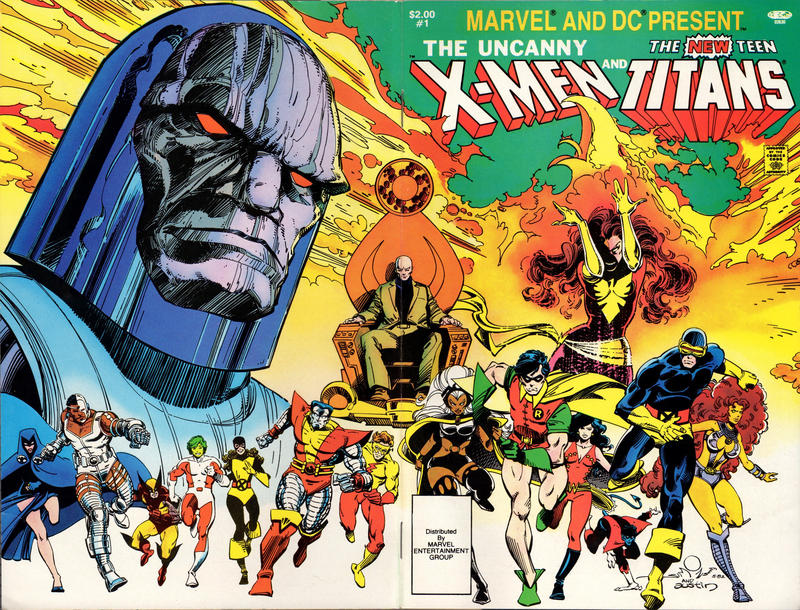
Published as a single 64-page issue, X-MEN/TITANS captured both teams at the height of their popularity, and with what most fans probably consider the definitive lineups for both teams, with Robin, Wonder Girl, Kid Flash, Starfire, Raven, Changeling and Cyborg appearing in the Titans, and the X-Men represented by what for me will always be the classic team: Cyclops, Storm, Colossus, Wolverine, Nightcrawler, Kitty Pryde and Professor Xavier. The story, “Apokolips…Now,” was written by X-Men creator Chris Claremont and drawn by Walt Simonson and Terry Austin, who did an excellent job of combining the fine linework and detail of the Perez style people were accustomed to seeing on NEW TEEN TITANS with the strong character work and emotion that X-MEN illustrators like Byrne and Cockrum usually brought to the table.
As for the plot, Claremont provided a doozy: DC’s Darkseid needs to resurrect Dark Phoenix (the then-deceased Jean Grey) so that the nearly all-powerful being can provide the power necessary to convert Earth into a new Apokolips, destroying all civilization in the process and reducing what survivors remain into Darkseid’s slaves. Resurrecting Dark Phoenix requires the harnessing of the emotional memories of her companions, the X-Men, and capturing all the remnants of her psychic residue from the places on the Earth where her power was most keenly felt. A job like that requires a local guide, and Darkseid has hired none other than Titans adversary Deathstroke the Terminator.
Darkseid sends his minions to infiltrate Xavier’s School and secretly tap the X-Men’s memories of Jean, and the same night a knock at the front door reveals what appears to be Jean’s ghost, begging her lover Scott Summers for help.
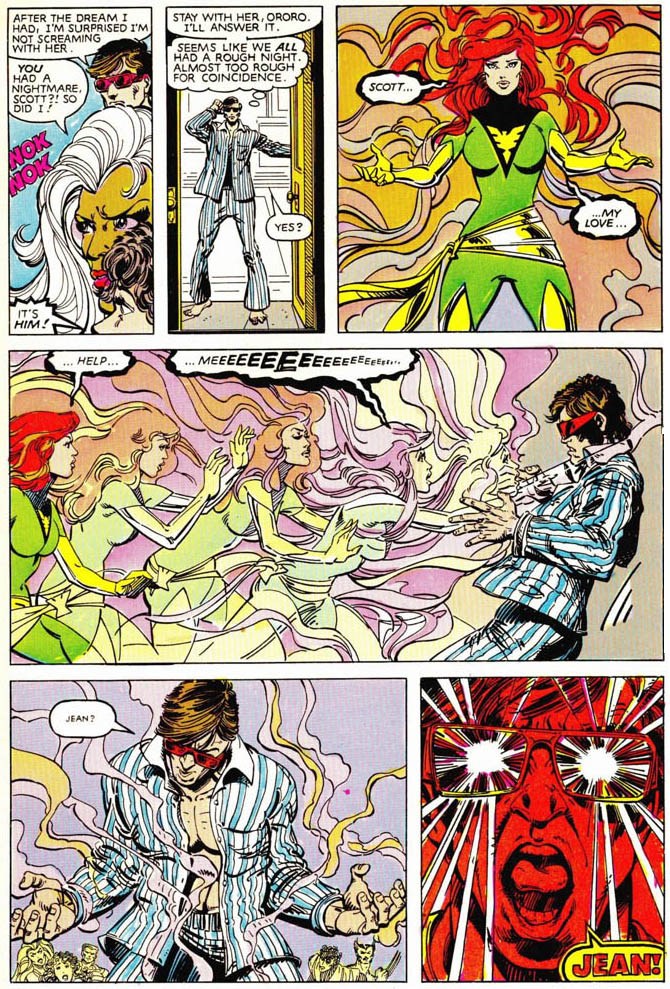
Meanwhile, miles away at Titans Tower, the Titans’ resident empath Raven has a precognitive dream about the return of Phoenix, a threat Starfire recognizes from her time in outer space.
It’s when the two teams finally meet up that things really start to get fun, and it was a rare moment in comics history that saw the two most popular competitive licenses meet up, both at the height of their popularity.
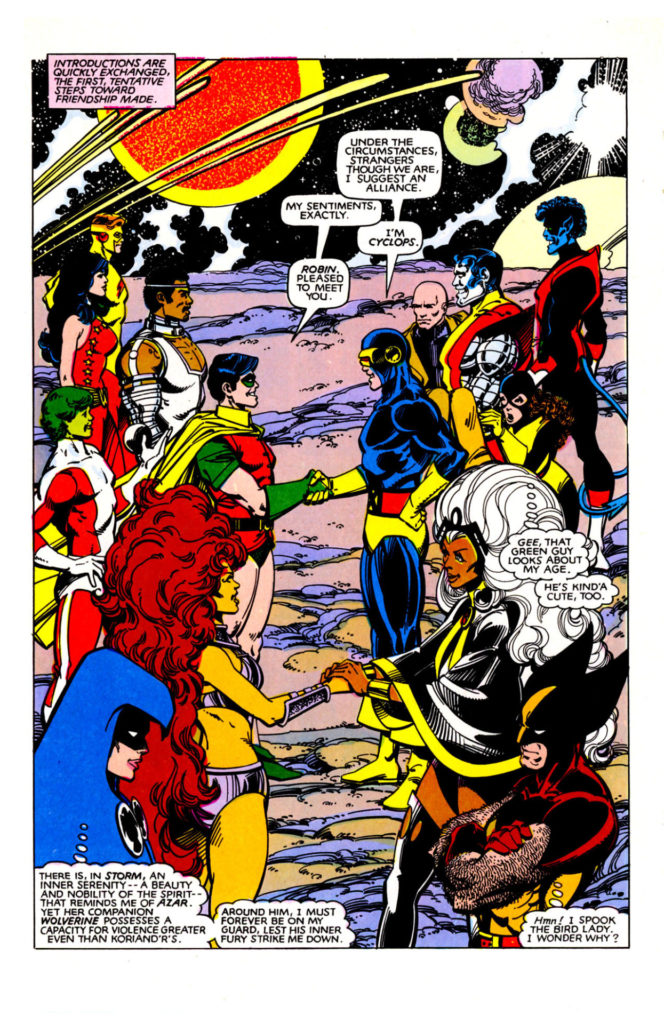
A word here about the book’s general setting. One of the best decisions made here (as well as in some of the earlier crossover books like the Superman/Spider-Man specials and Batman/Hulk) is to pretty much set mainstream continuity aside for the sake of telling a good story, and to assume the conceit that the Marvel and DC characters co-exist on the same world, in the same “universe” for lack of a better term, and always have. Rather than wasting a lot of time with parallel-universe psychobabble, the reader is expected to just absorb through context that this story is taking place outside regular continuity, (a notion established pretty much by a single comment of Robin’s in which he considers going to the Justice League or the Avengers for assistance) and it works just fine.
Claremont’s story here is the best kind of plotline for a crossover book like this: one that makes use of the histories and backstories of both groups of characters, and takes them all in a new and startling direction, yet leaves them back to their superficial status quo by story’s end, not requiring readers of either solo title to pick up this book to continue with their adventures. Claremont also has to be given credit for having the nerve to retread upon the hallowed ground of the “Dark Phoenix Saga,” a story which even in ’82 was already considered a classic. It’s a tough tightrope to walk, and Claremont pulls it off splendidly. Claremont also does a fine job scripting the Titans characters, who sound pretty much as if TITANS creator Marv Wolfman was behind the typewriter. Indeed, Claremont handles the Titans’ characterizations just as well, from Robin’s moralistic leadership to Starfire’s impulsive temper to Raven’s restrained, emotionless demeanor. Only Wonder Girl and Cyborg really get the short end of the stick here (as do Storm and Nightcrawler on the X-Men’s side of things.), but with seventeen main characters to focus on, that’s understandable.
It’s also interesting in retrospect that this book was clearly published before Marvel decided that Wolverine was the solution to any comic’s sales problems, because although Wolverine is featured prominently, he’s by no means the star of the book, and doesn’t get much more screen time than folks like Starfire or Raven. Indeed, there’s no doubt that, although Claremont strives to include everyone in the story, to his mind, Scott Summers is the heart of the X-Men, and it’s generally through his eyes that the story turns.
It’s when the X-Men and the Titans meet up and start working together that it’s clear that both Claremont and Simonson are having fun. With only a few flashes of dialogue here and there Claremont manages to touch on all kinds of character points, such as Kid Flash’s then-prominent jingoism and xenophobia, Kitty Pryde’s innocence, Peter and Kitty’s adolescent jealousy, Starfire’s flirtatiousness, Robin’s cool confidence of command, and lots more. Claremont also finds some good material in pairing up new X-Titan combinations, such as the youthful attraction between Gar Logan and Kitty Pryde:
Another telling moment comes with a powwow between the teams’ two leaders, Cyclops and Robin, in which they plot to merely destroy Darkseid’s machine and then get out to gather help, in the form of “every super-hero on Earth.” The two most human and least powerful members of their teams, keenly aware of their own mortality and the fact that they’re hopelessly overmatched in this fight, and yet they go in anyway, because that’s what heroes do.
As for Simonson, he takes advantage of the expanded page count by giving us more than the usual amount of full-page panels or page-length panels, as well as altering the storytelling to give us a fair amount of three- or four-panel pages. The result is a sense of grandeur and “bigness,” for lack of a better word, about the storytelling.
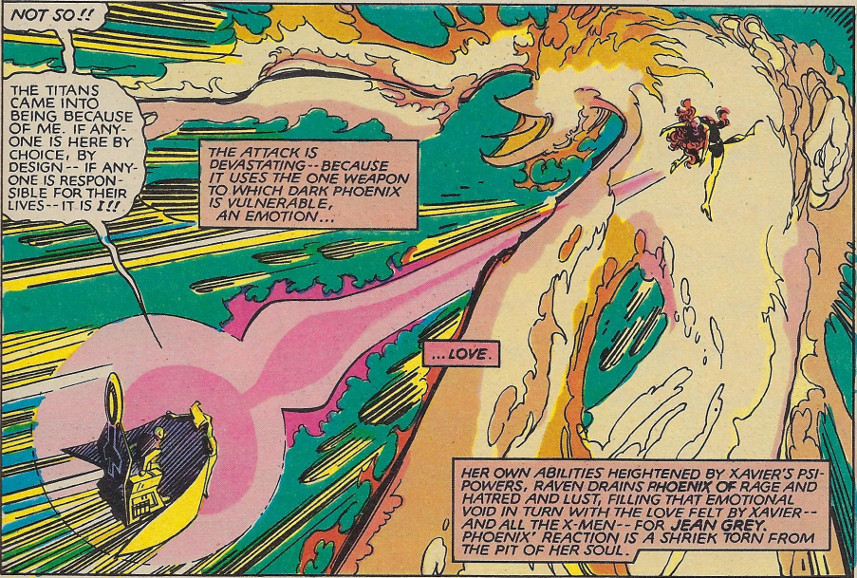
Simonson also does an excellent job with his character acting, in getting the individual heroes and villains’ characterizations to come across through their actions, poses and physical appearances, particularly in Darkseid, who always carries himself in a very blase, almost casual fashion, even when under attack.
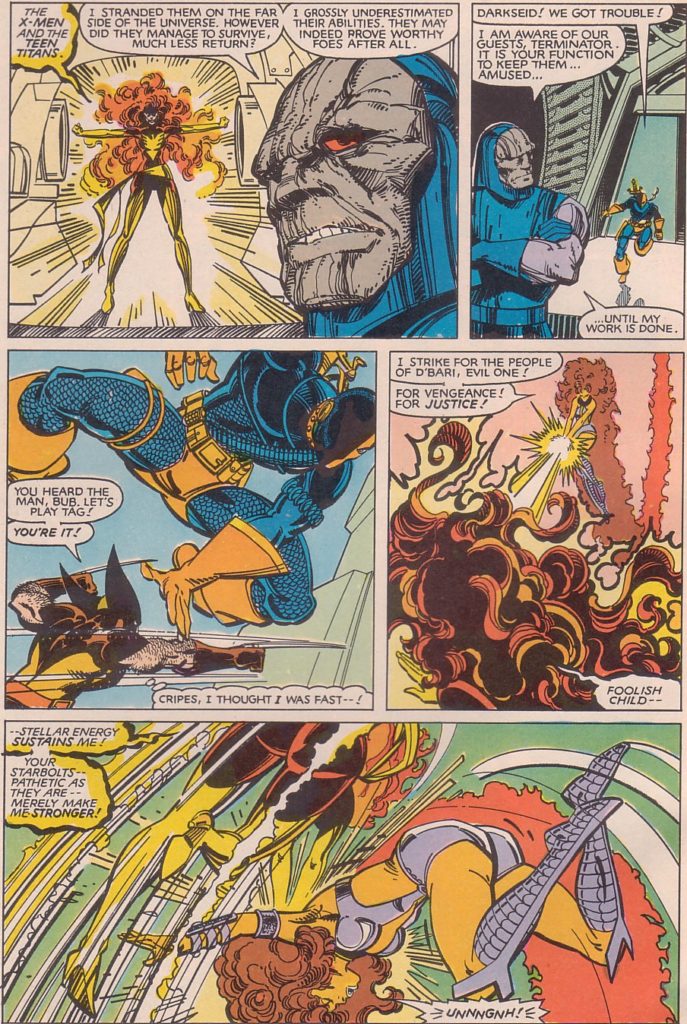
Funny, exciting and even a little sad, X-MEN/ NEW TEEN TITANS gives you just what you want from a crossover book, spotlighting what’s best about both series while taking them to places you’ve never seen before.

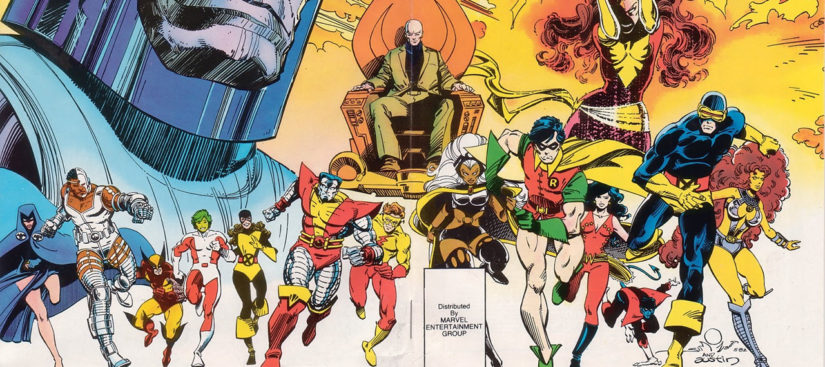
Comments are closed.